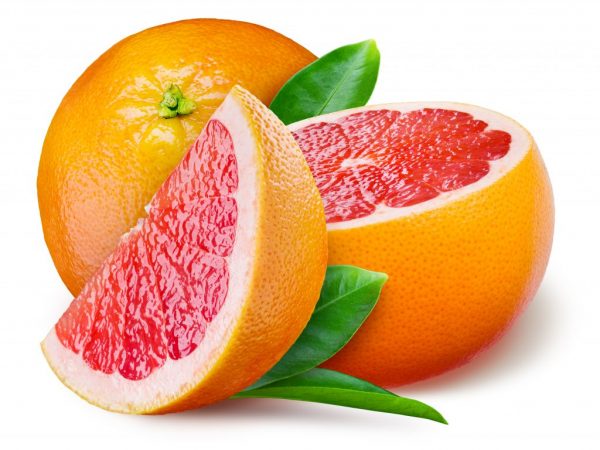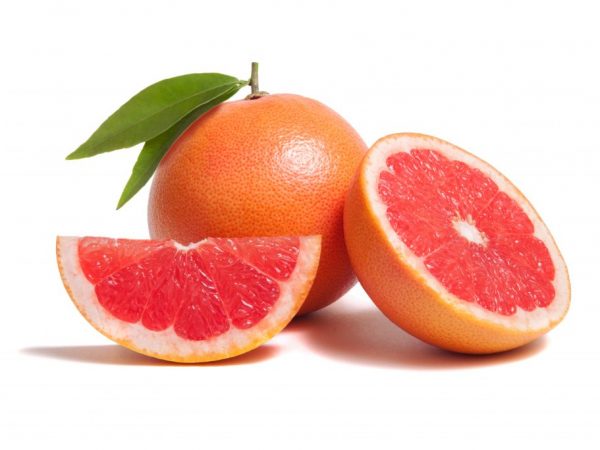Features of grapefruit and its varieties
Many citrus fruits are popular as food and ingredients in home medicine and cosmetology. Grapefruit is a hybrid of close relatives - pomelo and orange. The general characteristics of the fruit make it possible to distinguish certain types of grapefruit.

Features of grapefruit and its varieties
Characteristics of grapefruit
Grapefruit is a cultured citrus that does not occur in the wild. It is common in countries with warm climates and heavy rainfall. Prefers to grow in places brightly lit by the sun, does not differ in frost resistance.
The grapefruit tree is an evergreen plant with a round crown, perennial, its maximum height is 12-15 m, the average is up to 6 m. On the branches the plant has small thorns. The bark is smooth, sometimes small cracks are visible.
The leaves are large, up to 15 cm in length, the flowers are also large (their diameter is 5 cm), white, and have a pleasant strong smell. The fruits are also large, they reach a maximum of 400-600 g, have a diameter of up to 15 cm. They have a thick, smooth skin with slight irregularities, fragrant and juicy pulp. Often arranged in bunches, like grapes: 2 to 15 pcs.
Useful properties and negative traits
Many citrus fruits have similar properties. Grapefruit, like its relatives, is rich in fiber, vitamin and mineral complexes, essential oils and acidic compounds. The benefits of the fruit are closely related to its chemical composition:
- phytoncides help get rid of microbes and infections, improve breathing and general well-being;
- vitamin C strengthens the protective function of the immune system, regulates the absorption of certain useful elements;
- B vitamins regulate the activity of the cardiovascular system, digestion and metabolic processes;
- potassium, magnesium, phosphorus, iron, sodium and other chemical elements help in maintaining muscle tone and strengthening the skeleton, transporting and synthesizing nutrients;
- essential oils improve the condition of the skin, hair and nails, trigger the body's rejuvenation mechanism.
The main trait that unites all citrus fruits is the negative consequences - the high probability of allergic reactions.
It is important to adhere to a special diet for pregnant women, breastfeeding mothers and people with citrus allergies, as well as young children under 3 years of age. Owners of diseases associated with the gastrointestinal tract, namely, with an increased acidic environment of the stomach, it is undesirable to consume the fruit in excess.
There are contraindications for the use of citrus during long-term use of certain medications, the composition of which enters into undesirable chemical reactions with the components of the fetus. Juice is also a poor alternative to water when the person drinks the medication.
Excessive use of seed oil ester sometimes negatively affects the general condition, so the best way out is to follow the recipe.The peel of the fruit is capable of containing various chemical elements that behave aggressively towards the human body. They are designed to preserve the freshness of the fruit during transportation.
Varietal differences

The fruit is prized for its taste
There are 20 types of grapefruit. They are grown in the USA, China, Mexico, Georgia, Israel.
Differences are reflected in the color scheme of the peel, pulp and the presence of seeds. The main varieties are divided into the following groups:
- Red grapefruit. The most famous, highly regarded for its taste. The pulp is sweet, juicy, and has a bright red tint. At the end of the season, it turns yellow or beige. The darker the color, the higher the sugar content of the fruit. There are no bones. The rind is reddish-yellow, thin and smooth. Varieties - Rubin, Rio Red, Rubin Star.
- White grapefruit has a lighter shade of flesh and a light yellow skin. It tastes less sweet than red, has a slight bitterness, but the skin of the fruit is also pleasant to the taste. There are no seeds in the fetus. It is often used for weight loss diet food. It is represented by the Duncan variety, and, together with the pomelo, is the basis for the selection of citrus, which is called sweetie. It is known as the Florida fruit.
- Pink grapefruit is represented by fruits with yellow skin and light red pulp. The sweetness level is average between red and white grapefruit. There is no bitterness in the taste. A bright representative is the Flame variety.
- Yellow grapefruit encompasses many different varieties. The fruits of this species have a yellowish light skin. The pulp is reddish or pink in color, with a sweet and sour taste and a slight bitterness. The presence of seeds in the fruit can vary: they are present or absent in representatives of the same varieties. A well-known variety is Marsh.
Calorie content of grapefruit
Differences in the color of the pulp and upper skin do not affect the calorie content of citrus fruits. The energy value of the fruit is 35 kcal per 100 g of product. Red grapefruits can be several units more calories because they have a slightly higher sugar content.
Such indicators are due to the large amount of water in the fruit, which occupies 90% of the weight. Sugars occupy only 4-7% of the composition. The protein content does not exceed 0.7 g, fat - 0.18 g, carbohydrates - 11.5 g, dietary fiber - 1.1 g.
Some of the ingredients and derivatives of grapefruit are also low in calories.
The energy value of the zest of the fruit does not exceed 29 kcal per 100 g, fresh juice - 30 kcal per 100 g, grapefruit nectar - 44 kcal per 100 g. components for longer preservation.
Conclusion
The variety of fruit representatives of grapefruit can be divided into 4 main groups. They are used for pure consumption, for juices, nectars, salads and other dishes. The difference in the color scheme of the pulp and rind is not the key to the calorie content, but it does correspond to different tastes. Citrus is introduced into the diet, relying on its benefits, but at the same time taking into account the harm.


